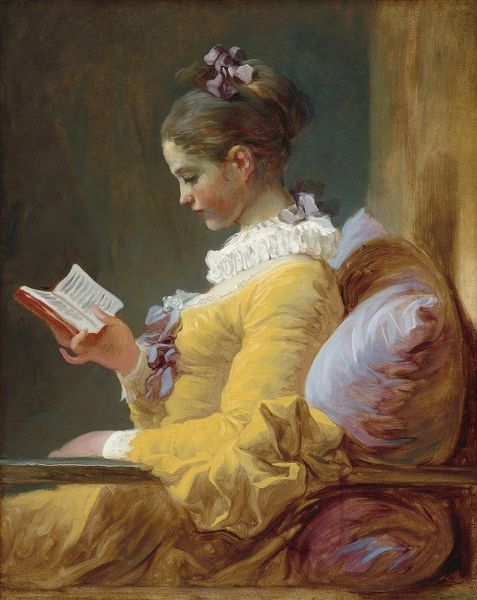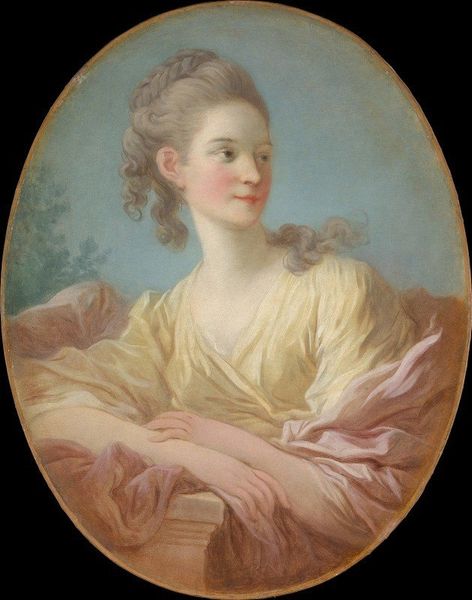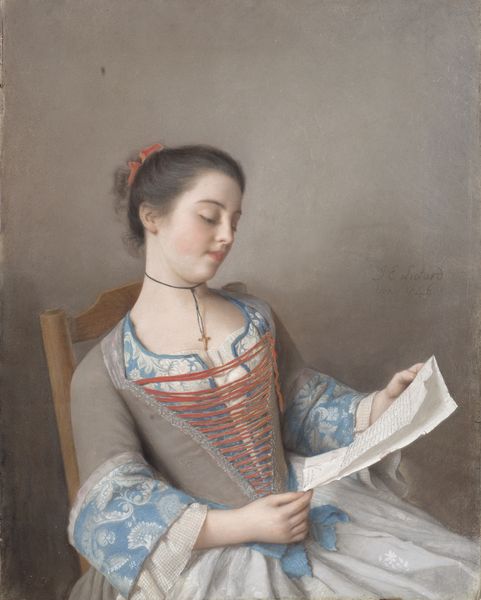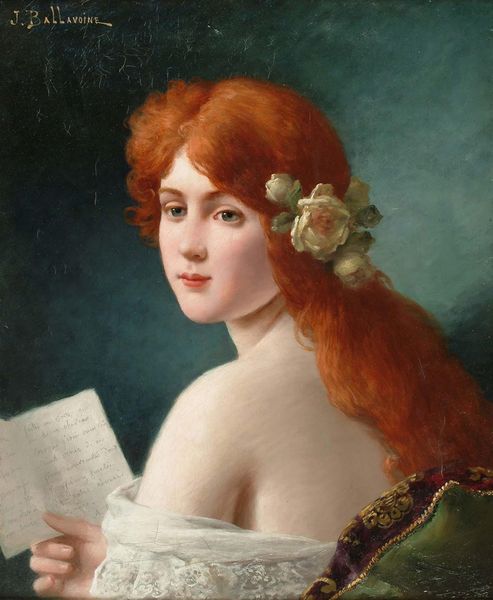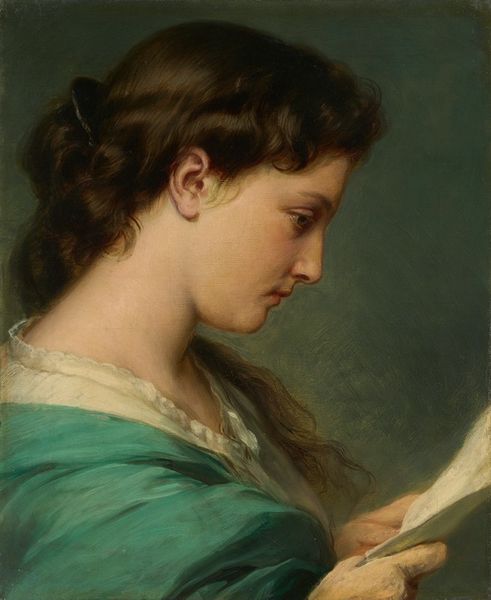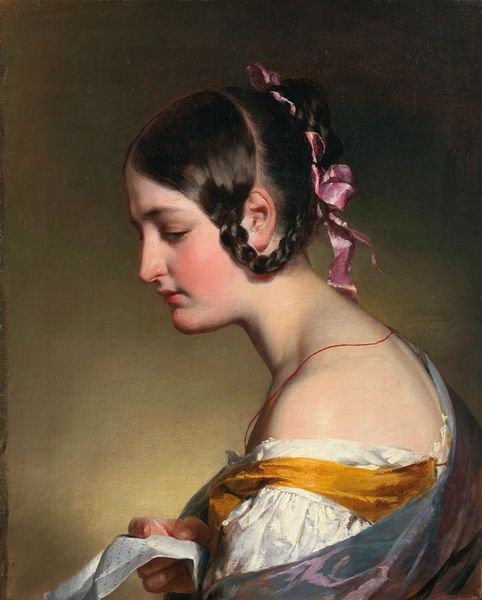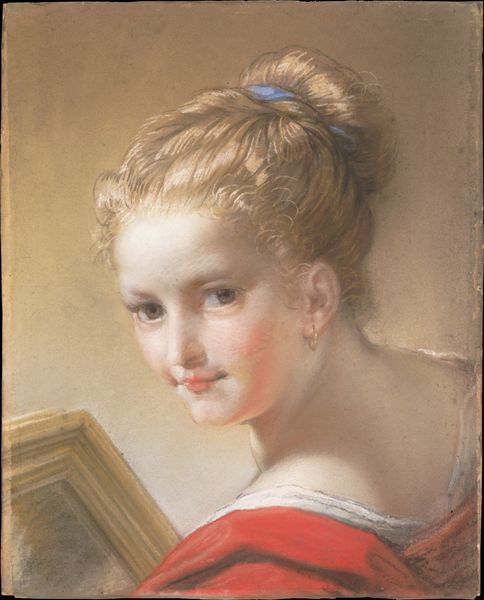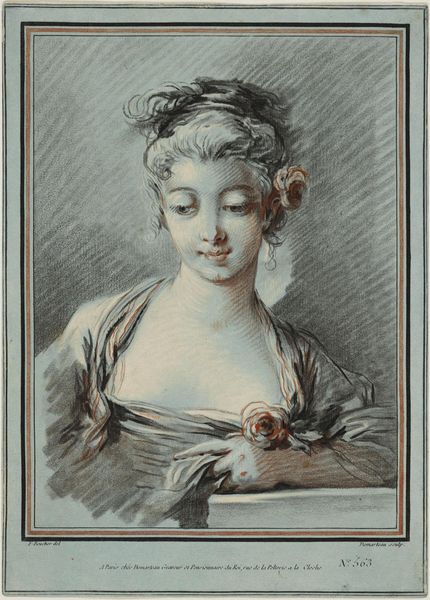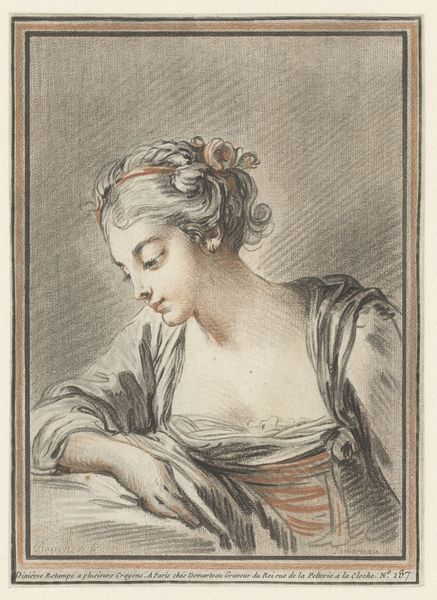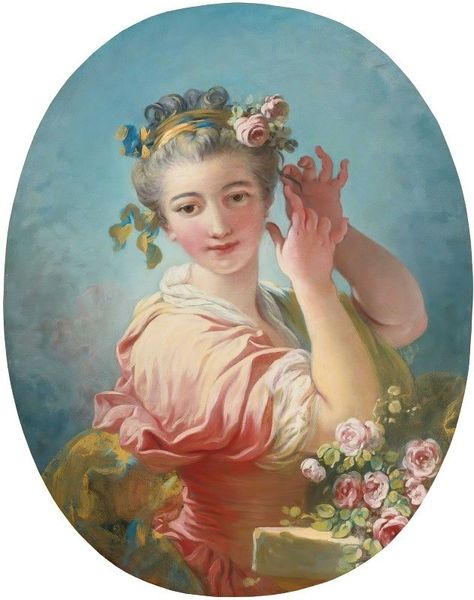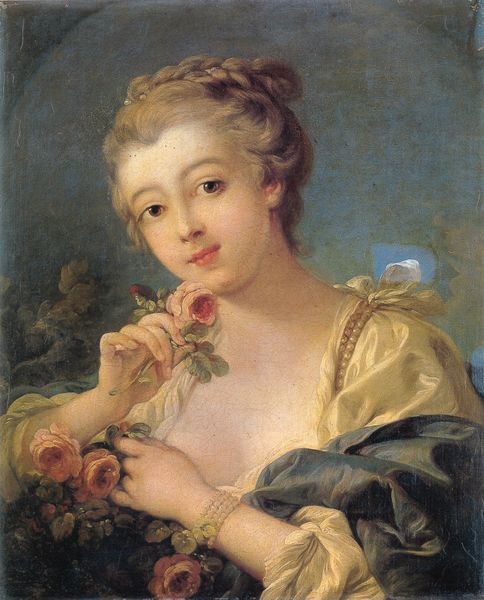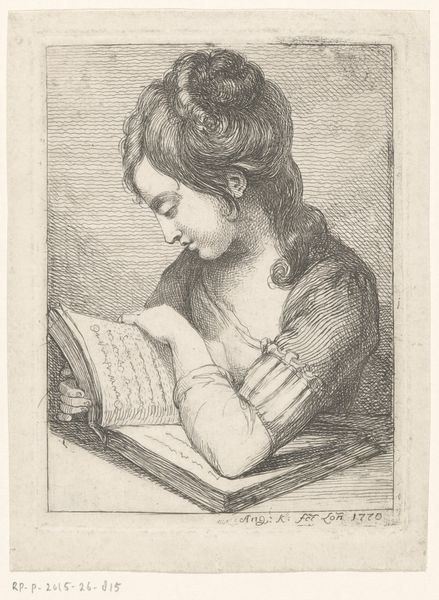
Copyright: Public Domain: Artvee
Jean-Honoré Fragonard painted this oval scene, Allegory of Vigilance, sometime during the 18th century in France. It depicts a woman reading, with a lit oil lamp next to her, which has been interpreted as a symbol of ‘vigilance’. But how did paintings such as this one function in French society at this time? The French academy taught artists to create paintings with serious moral or historical subject matter, but many artists such as Fragonard made their living through lighter, more ‘decorative’ paintings, often commissioned for the private homes of wealthy patrons. The frivolity of rococo was, for many, symbolic of the corruption and decadence of the aristocracy. Was this painting simply an innocent portrayal of a woman reading, or could it be interpreted as a commentary on the social and political issues of the time? To fully understand the meaning of this painting, we need to consider its historical context, the artist's intentions, and the audience for whom it was created. By exploring these factors, we can gain a deeper appreciation of the artwork and its place in history.
Comments
No comments
Be the first to comment and join the conversation on the ultimate creative platform.
